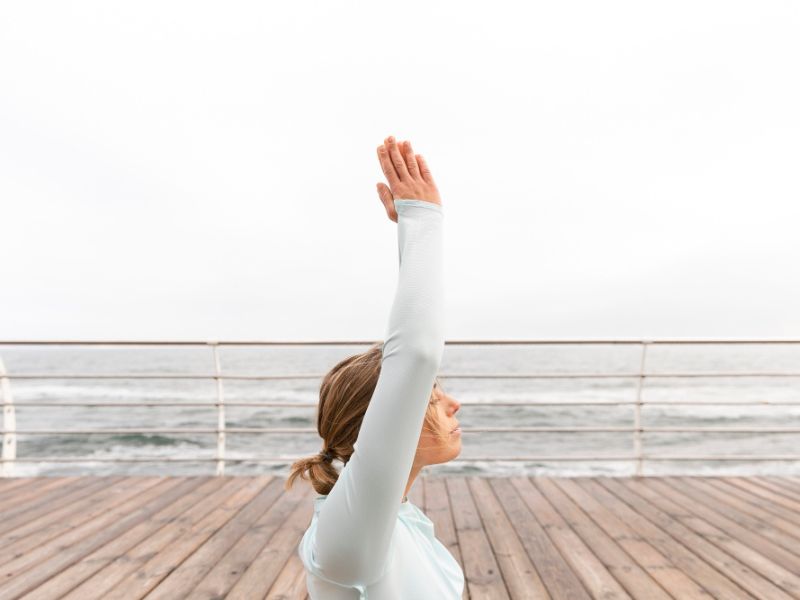Meditation is an age-old practice with roots in ancient cultures. It has been long proven that it offers a range of health benefits, including reduced stress, anxiety, and depression, improved cardiovascular health, enhanced sleep quality, strengthened immune system, and heightened cognitive function.
A meta-analysis done by the NCBI of trials involving 330 participants showed that meditation reduced wake time and improved sleep quality for insomniacs by 50 per cent. Furthermore, the British Heart Foundation states that a 5-year study showed that meditation led to lowered blood pressure and reduced the risk of heart attacks and strokes by 48 per cent.
It is recommended to us constantly by doctors, social media and loved ones, to try the type of meditation where you sit still in silence and try to stop your mind from wandering, with the promise of complete relaxation and stress relief. This is known as mindfulness meditation and is currently one of the most well-known and traditional methods nowadays. However, the traditional way isn’t accessible to a lot of people, including myself. There are times when I could really use some grounding stress relief, but feeling as though I have to sit in perfect stillness and silence is far more likely to triple my agitation and have me checking the clock every thirty seconds for when I can be done. It’s not exactly the serenity we’re aiming for.
Maybe your “train of thought” is more like 10 runaway trains, or sitting on the floor for more than a minute makes you feel like calling a chiropractor, or maybe you live in a city where silence doesn’t actually exist. There are so many reasons why mindfulness meditation might not work for you, but that doesn’t mean you’ve failed at meditation. That would be like trying on a shoe 3 sizes too small, tripping over and deciding that meant you were a failure at walking. There is no such thing as the “right” way to meditate, there’s only the right way for you. Thankfully there are so many different styles to choose from and even more small changes you can make within each technique to suit you. Below are a few types for you to explore:
Guided meditation: Navigating inner landscapes
If your mind tends to wander off towards anywhere but a peaceful place, then guided meditation can be a great way to hold your attention without the constant pressure to steer it along the right path yourself. Guided meditation involves listening to a meditation leader or a recording that provides step-by-step instructions and visualisation cues. This can be one of the best techniques to try for beginners because it gives the mind something to follow.
There are endless online guided meditations available to experiment with in order to find the guide or themes that resonate best. Maybe you’d like some positive affirmations to start your day right. Or maybe you’d enjoy a verbal guide through a beautiful forest so that your imagination can work with you, instead of against you. Finding a guided meditation that brings you joy is a great way to turn meditation from a chore into something you look forward to. It is also extremely helpful if you’re surrounded by a lot of distracting background noises because you have the option to listen with headphones. This can be done even if you’re in a busy office or you’re surrounded by noise pollution. Let yourself tune into the guiding voice and have the outside world slip away.
Body scan meditation: Connecting with the physical self
If you like the sound of meditation with some sort of direction, but find someone else’s voice distracting, then you might enjoy a body scan meditation. It’s very beginner-friendly because it follows the same patterns of internal check-ins every time and you don’t have to remember anything because it’s all a part of you. This technique involves paying close attention to the sensations and feelings within each part of the body, progressively moving from head to toe or vice versa. Not only is this great for focusing your mind, but also for improving your mind-body communication.
A common way that we deal with stress is by holding it in our body and then ignoring the physical signals that it’s there. My clients will often talk of constant inexplicable headaches, but when all distractions and suppressions are removed and they tune in to their bodies, they come to realise the extreme tension in their shoulders, neck and jaw. Once they are mindful of this and allow themselves time to intentionally relax these areas one by one, many of their stress-related symptoms reduce or disappear completely. This is also a more physically accessible option for those that are uncomfortable spending extended periods in a seated position because many prefer this practice to be done while laying down. This makes it a great option for checking in with your body when in bed before starting your day or before you drift off to sleep.
Breath awareness meditation: Riding the rhythms of breath
Meditative breathing exercises work wonders for the mind and body. If you’re someone who experiences a lot of anxiety, especially the kind that leads to hyperventilating or distressed uneven breathing, then training your breath awareness can be extremely beneficial. By directing attention to the inhales and exhales, and the physical processes that allow them, practitioners create a rhythm that synchronises their mental state. This is a great technique for individuals looking to strengthen their focus and learn how to harness the calming power of the breath. Not only can it provide soothing effects in the moments of practice, but also equips you with great anxiety management skills long term.
Moving meditation: Finding stillness in motion
For some, being still is not relaxing or a default setting, it has to be a very active choice that takes up headspace and energy. There are already many work and social settings that require seated stillness, this can make further required stillness for meditation far more frustrating than relaxing. If this is the case then practises like Tai Chi, Qigong, and walking meditation allow engagement in intentional movements while maintaining a meditative state of mind. This is another beautiful way to reconnect with your body. The point is not to burn calories or reach your 10k steps, but instead to release physical restraints through the flow of movement and find peace, mindfulness and balance within motion.
Single pointed focus meditation: Training the wandering mind
While some people find this requires a similar practice of focus as mindfulness meditation, single-pointed focus meditation provides you with something external to engage with. It involves narrowing one’s focus to a single point of reference. The goal is to train the mind to remain concentrated on this focal point, thereby reducing mental clutter, enhancing mental clarity and improving cognitive abilities. The focal point can be anything you like, but a great choice is the flame of a candle. This is because it is still a static point, but the flickering movement of the flame can help to draw you back in if your mind starts to wander. Another benefit is that you can engage your other senses by choosing a scented candle. After enough practice your mind will start to associate that smell with relaxation, turning your candle into a powerful grounding tool.
Mantra meditation: Harnessing the power of sound
Some people resonate with auditory experiences more than visual, some find that having to act something out instead of thinking about it is more engaging and some find the vibrations of sound to bring a sense of harmony to the body. Rooted in ancient Indian traditions, mantra meditation involves the repetition of a specific word, phrase, or sound, known as a mantra. This rhythmic chanting helps anchor the mind, preventing it from wandering aimlessly. Getting distracted? Come back to the mantra. Hear it ring out and feel it throughout your body. Not only does it have a powerfully engaging effect during meditation, but also your chosen mantra can be used for grounding during your everyday life because of the associations made during your practice.
The journey of finding the right meditation for you is a deeply personal one. Whether you’re drawn to mindfulness, guided experiences, body-centred practices, or the power of sound, each meditation style holds the potential to unlock a heightened sense of peace and balance. With an open mind and a willingness to experiment, you’ll uncover the meditation practice perfectly tailored to your needs.
About the author

Jess Forster is a Holistic Health & Wellness Specialist and Founder of Empowered Health Education. As a licensed yoga teacher with qualifications ranging across nutrition, physical training, mental health and hormone management, Jess works with her clients to map out and execute a balanced health plan that addresses the full picture. She is dedicated to empowering individuals to take control of their own well-being through education, support and personalised guidance. She specialises in providing a practical, realistic and compassionate approach to health, with an emphasis on understanding and supporting the different needs of an individual, instead of a one-size-fits-all mindset.
Connect with Jessica Empowered Health Education | Linkedin |. Instagram









